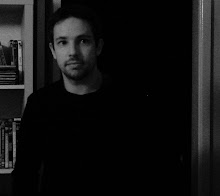 "The owl that calls upon the night speaks the unbeliever's fright" for William Blake's The Auguries of Innocence, 1959
"The owl that calls upon the night speaks the unbeliever's fright" for William Blake's The Auguries of Innocence, 1959 From Horned Beetles & Other Insects, 1958
From Horned Beetles & Other Insects, 1958It took a while to find a reasonably-priced copy of The Complete Prints of Leonard Baskin, but it was worth the wait. From the introduction by Ted Hughes:
These images... resemble stained glass windows - not only physically (though they do that too, obviously enough, with their starkly subdivided interiors, their palimpsest of mapped inner regions opening behind and within each other), but in the way they process our attention. They place us within a sacred building, as if we were looking out through these icons and seeing the world's common light changed by them. Or else they place us outside looking in. Then we see through their symbols still further mysterious business going on round an altar. That deeper life, in other words, is not just deeper than ordinary life, or just more universal. It is elect and consecrated. I hesitate to call it religious. It is rather something that survives in the afterglow of collapsed religion.
This rich inwardness of Baskin's art has many components. Some of the more accessible of these, maybe, can be seen in his graphic style itself, which is so like a signature, so unique to him and so consistent, that it might well interest a graphologist. But the oddities of it hint at other sources. As if a calligraphy had been improvised from the knotted sigils and clavicles used for conjuring spirits, those bizarre scratch-marks of the arcane powers, such as we find in practical grimoires. This element of his draughtmanship is no more than a trace, but it peers from every interstice, and suggests a natural psychic proclivity, enough to attune his operation, perhaps, to certain freedoms familiar in Jewish mysticism. A passport between worlds usually kept closed to each other. It is one of the essentials of his work's power to disturb, and of it's weird beauty too.
Previous posts on Baskin here and here.
These images... resemble stained glass windows - not only physically (though they do that too, obviously enough, with their starkly subdivided interiors, their palimpsest of mapped inner regions opening behind and within each other), but in the way they process our attention. They place us within a sacred building, as if we were looking out through these icons and seeing the world's common light changed by them. Or else they place us outside looking in. Then we see through their symbols still further mysterious business going on round an altar. That deeper life, in other words, is not just deeper than ordinary life, or just more universal. It is elect and consecrated. I hesitate to call it religious. It is rather something that survives in the afterglow of collapsed religion.
This rich inwardness of Baskin's art has many components. Some of the more accessible of these, maybe, can be seen in his graphic style itself, which is so like a signature, so unique to him and so consistent, that it might well interest a graphologist. But the oddities of it hint at other sources. As if a calligraphy had been improvised from the knotted sigils and clavicles used for conjuring spirits, those bizarre scratch-marks of the arcane powers, such as we find in practical grimoires. This element of his draughtmanship is no more than a trace, but it peers from every interstice, and suggests a natural psychic proclivity, enough to attune his operation, perhaps, to certain freedoms familiar in Jewish mysticism. A passport between worlds usually kept closed to each other. It is one of the essentials of his work's power to disturb, and of it's weird beauty too.
Previous posts on Baskin here and here.


































.jpg)


















No comments:
Post a Comment